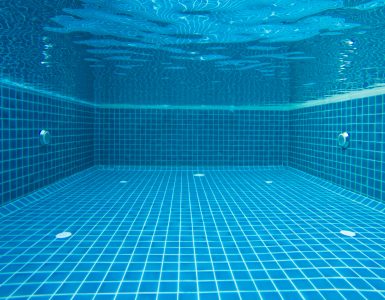Following the development of laser surgery techniques in the mid-20th century, an important question was brought before the leading Poskim of the previous generation: is it Halachically permissible to perform a Bris using a laser beam?
The question primarily pertained to the feasibility of circumcising patients with hemophilia. Hemophilia is an X-linked recessive disorder (and, therefore, affects primarily males, although some females may be mildly symptomatic) that results in the deficiency of clotting factors in the blood. Consequently, hemophiliacs experience heavy and dangerous bleeding with injuries or surgery, although spontaneous bleeds can occur in severe hemophilia. The diagnosis is often made following an injury (in the Jewish population, this is often in the aftermath of the Bris), but the disorder is also detectable prenatally through testing such as amniocentesis, and pre-fertilization in preimplantation screening, allowing for prevention using preimplantation genetic diagnosis (PGD).
The severity largely depends on the extent of the clotting factor deficiency, and this varies from patient to patient. For patients with severe hemophilia, surgical procedures are highly dangerous, and elective surgery is generally avoided unless it is necessary, in which case exogenous clotting factors must be administered and the patient must be closely monitored postoperatively.Consequently, many doctors are adamantly opposed to circumcising patients with severe hemophilia, as the procedure is medically unnecessary. However, milder hemophiliacs can be circumcised safely if treated with clotting factor concentrates around the time of the circumcision.
It is plausible that Chaza”l were referring to hemophiliacs when they instructed that those whose brothers died because of circumcision should not be circumcised (Yevamos 64b). However, this was not the approach of the Rambam (Mila 1:18) who explains that the Gemara refers to a person whose brothers died due to excessive weakness (which is why he rules that one should wait until the child grows bigger and stronger until attempting a Bris).
Regardless of whether this case was directly addressed by Chaza”l, it is clear that a patient with hemophilia should not be circumcised if it will endanger his life, as Pikuach Nefesh overrides all the Mitzvos in the Torah.[1]
An alternative and safe method for circumcision in a patient with hemophilia is to excise the foreskin using a focused laser beam. The powerful energy burns through the tissues, excising the foreskin without bleeding. Once this technique was developed and accepted by the medical field, the question was brought to the Poskim as to whether this method fulfills the Halachic requirements of the Mitzva of Bris Mila.
The Rambam (Mila 2:1) rules:
One may circumcise with anything, even with a flint, a piece of glass, or anything that cuts. One should not circumcise with the membrane of a reed as this is dangerous. It is the Mitzva min haMuvchar to circumcise with metal, whether a knife or scissors. It is the custom of all of Israel to circumcise with a knife.
The Shulchan Aruch rules similarly (Y.D. 264:2). Clearly, Halacha does not require cutting the foreskin with a specific device or material; “anything that cuts” is acceptable. However, it is still questionable whether invisible and intangible laser beams can be included in the category of “anything that cuts”. Perhaps, this definition only extends to tangible cutting instruments like the examples listed by the Rambam – flint, glass, knives, or scissors.
The Minchas Yitzchak (8:89) cites Rabbi Avraham Dovid Horowitz zt’’l[2] who saw no logical reason to exclude a laser beam from the rule of “anything that cuts”. He contrasts Chaza”l’s shorter statement regarding the laws of Shechita, “One may slaughter with flint and glass” (Chulin 15b), with the longer statement regarding Mila, “and with anything that cuts”, to show that that there are no limitations when it comes to Mila.
However, he also cites the ruling of the Imrei Yosher[3] (2:140) that one may not perform Mila with a cream, since one’s hands must cut the foreskin (albeit aided by “a cutting device”). When cream is used, the hands do not cut the skin; the excision occurs indirectly. The Minchas Yitzchak deliberates whether a laser beam is comparable to a cream. Perhaps it too lacks the involvement of the hand in the cutting. On the other hand, since the handheld laser does cut through the skin directly, it would be considered cutting as opposed to the cream which is manually applied some time before the excision that will occur in the future.[4]
Rav Shmuel Wosner zt”l (Shevet haLevi 9:212) adds that one should not mistakenly argue that the Mitzva of Mila does not call for “cutting and excising”, and only requires the “removal” of the foreskin. He rejects the inference of the Chasam Sofer (Y.D. 249) who cites the Targum’s translation of “uMal” (Devarim 30:6) as “v’Yadei“, which means “he shall remove”, as proof that the act of circumcision is not defined as “cutting” but only as “removal”. He counters this by pointing to the Targum’s translation of the similar terms, “Himol Lachem” (Breishis 17:10, 34:15) as “Migzar Lechon” and “un’Maltem” (ibid. 17:11) as “v’Sigzerun“. These terms imply that cutting is required.
HaGaon Rav Asher Weiss Shlit”a (Minchas Asher 3:78), addresses the question of laser Bris Mila in the context of a wider question: Can a man with hemophilia convert to Judaism by only undergoing Tevila while skipping Mila? In the course of his discussion, he recognizes laser circumcision as Halachically valid:
As long as it is human activity and the foreskin has been cut and removed, it is a valid Mila. Since there is no insistence on using a particular material, whether metal or wood or glass, etc., it is logical that there is no need for [a particular] material at all.
In other words, since the activity of the laser beam is a direct action, it is Halachically valid, even though it is invisible and intangible. However, circumcisions in which the foreskin is cut “automatically” – in an indirect manner without human action – are invalid.
Rav Asher Shlit”a addresses three additional considerations:
- Two reasons are given for the Halachic supremacy of an iron knife. The Prisha (7) cites the Midrash that states that Hashem promised this as a reward to iron for allowing the stone shot by King David to penetrate Goliath’s armor. The Levush explains that iron is preferred as it is exceptionally sharp and hence less painful. According to the second reason, a laser beam may even be preferred to a knife. Even according to the first reason, although using an iron knife is Mitzva min haMuvchar, when this is impossible – as in the case of hemophilia – it is acceptable to use a laser.
- Laser circumcision does not result in “Dam Bris”. Rashi (Shabbos 134a), in reference to a Posuk in Zechariah (9) asserts that extracting Dam Bris is a Mitzva. Nonetheless, all agree that the Bris is valid even without blood. Furthermore, it is feasible and safe for the surgeon to extract a minute quantity of blood by creating a minute scratch while performing the laser surgery.
- Peri’a (the removal of the inner epithelial membrane of the foreskin from the glans) is an inseparable part of Bris Mila – “One who did Mila without Peri’a is as if he did not do Mila” (Mishnayos Shabbos 19:6). Customarily, the Mohel uses his fingernails to tear and remove this membrane after the excision of the foreskin. However, it is acceptable to cut the Or haPeri’a together with the foreskin (“Mila uPeri’a b’Vas Achas), as this is the only Halachically acceptable alternative solution, and there are Poskim who permit circumcising this way Lechatchila in all cases.[5]
Rav Shmuel Wosner zt”l arrives at a similar conclusion. After emphasizing that one should certainly not use a laser for performing a regular Bris, he rules that when it is otherwise impossible, since “the laser beams dissolve the skin of the foreskin and the skin of the Peri’a, it is obviously permissible to use it, and it is a Mitzva to use it.” He adds that one should not recite the customary Bracha on the Mila, because “he does not fulfill the Mitzva in the manner that the Torah desired”. However, one should recite the Bracha Lehachniso b’Vriso shel Avraham Avinu, because the baby’s foreskin is ultimately removed and his body is sealed with the sign of the holy covenant.
This suggests that Rav Wosner did not view laser circumcision as fulfilling the Mitzva of Mila. He only endorses it to ensure that the individual will not be an Arel. However, at the end of his remarks, he adds: “Especially in our case where he is forbidden by the Torah to behave otherwise for reasons of Pikuach Nefesh, it is almost certain that he fulfilled the Bris and entered into the covenant of Avraham our forefather…” Thus, it seems that even Rav Wosner believes that laser circumcision does fulfill the Mitzva of Mila. Nonetheless, he argues that one does not recite the Bracha as the Mila is not performed in the manner that Hashem commanded
However, according to Rav Asher’s position, one may recite a Bracha on a circumcision performed with a laser. By contrast, Rav Shlomo Zalman Auerbach zt’’l (Shulchan Shlomo Erchei Refua 3:162) believed that laser circumcision should not even be used for hemophiliacs, as “a person does not cut with his own force, but directs the laser beam which cuts by itself.” (However, he does not clarify whether this ruling was only intended for when there are alternative available measures, or even for severe hemophiliacs.)
[1] Some Acharonim infer from the Rambam and Shulchan Aruch (Y.D. 263:1) that the Bris should only be postponed if postponement will reduce the risk. If not, one must proceed with the Bris and hope for the best. However, the Bi’ur haGra (ibid. 2) rejects this inference. See Minchas Asher Bereishis 28.
[2] R’ Avrohom Dovid Horowitz zt”l (1911-2004) was the Rav of Strasbourg, France following WWII and later a member of the Badatz Eida Chareidis in Yerushalayim.
[3] R’ Meir Arik zt”l (1855-1925), Rav of Jazłowiec and Tarnow.
[4] The Minchas Yitzchak’s assertion that the laser cutting is performed without the involvement of the hand is inaccurate, as the surgeon must apply the laser directly to the skin to be cut. That said, a laser beam still differs from other surgical instruments in that the cutting does not result from the applied force of the human hand.
[5] It should be noted that it is generally forbidden to depart from the custom of using the fingernails for Peri’a – see Tzitz Eliezer (8:29) who warns against this. We only raised this possibility for a hemophiliac for whom this is the only safe method.















Add comment